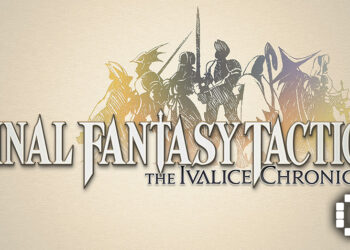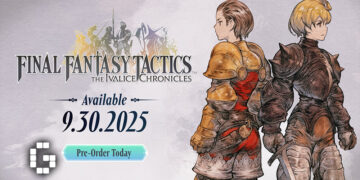Monster Hunter Rise is an interesting look at the direction of the Monster Hunter series. Since Monster Hunter 3U, the games have constantly explored all manner of new ways to make turning majestic wildlife into a fashion statement, often to some mixed response. Yet, in Rise, we get what appears to be a great culmination of all those games, as well as a few great new ideas thrown on, to boot.
The result is a Monster Hunter game that feels like it just, well, works. While the same can be said for past games Rise is the most blatantly iterative, and ends up feeling like they’ve really refined all the things they want you to do while you’re out hunting dinosaur-dragons.
The Best Monster Hunter Has Ever Been
Admittedly, when I first heard that Monster Hunter Rise would be a return to handheld consoles, I was doubtful. Generations didn’t run all that well on the 3DS, and come Iceborne World was a game that encouraged you to make a cup of tea in between hunts with its loading screens. Yet, with the move to the new RE Engine, it seems like those doubts were unfounded.
Rise’s maps feel much bigger than World’s albeit less densely populated with stuff. They’ve maintained World’s seamless transitions, not even including those clever stalls to secretly load like swiming or walking through bushes.
On top of that the game looks great, with relatively detailed models that look good up close in both handheld and docked mode. Rise also has an incredibly stable framerate, always maintaining a stable 30. The only exception to this is the Flooded Forest map, with the game occasionally dropping frames due to all the water.
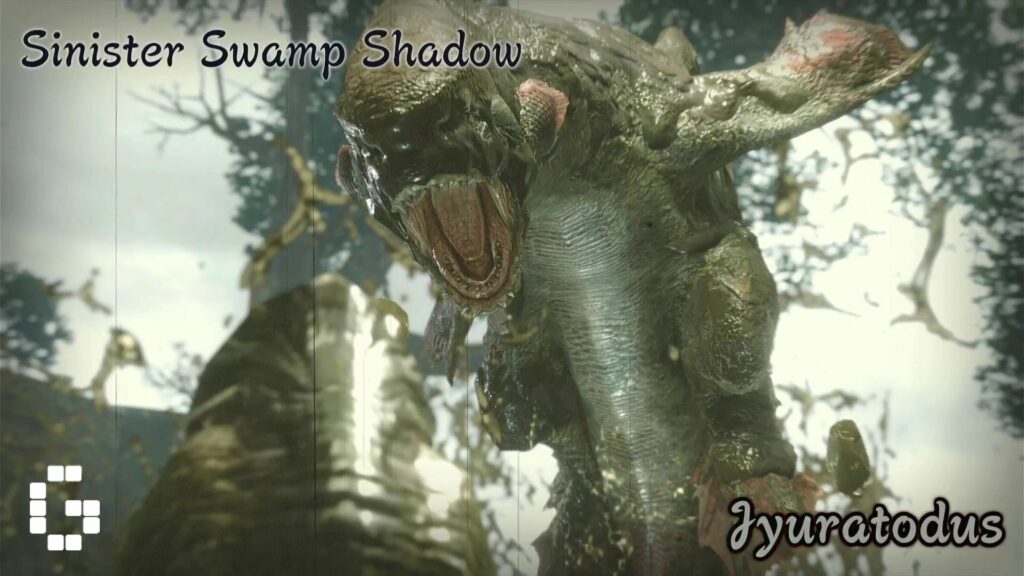
Another thing I really like with Rise is how it handles its presentation. Monster Hunter Rise’s aesthetic is very much traditional Japan, and this permeates everywhere through the game. Areas and monsters are given old timey vignettes to introduce them, complete with a very traditional voiceover.
Overall it’s definitely the strongest Monster Hunter games in terms of sheer presentation, considering its story has a much less bloated cast, and the fact that the game runs well.
Sent You My Love On A Wire
The most obvious way they’ve done this is with the Wirebug and the systems around it. At its most basic level, the Wirebug is a dramatic shake-up of Monster Hunter’s gameplay. While World’s Slinger allowed you to interact with fixed points on the map, the Wirebug lets you do this anywhere, launching you up, forwards, or even suspending yourself mid-air.

It’s not just the fact that you can do this at all, but also the fact that you do this with quite a bit of speed- it just feels good to do. That’s not even getting into the fact that you can follow it up with either an air dodge or an aerial attack, which chains into this game’s version of the mounting system. The Wirebug interacts with skills like Evade Extender too, meaning that you can really gain a lot of mobility with this new ability, letting you traverse the new maps or dramatically reposition.
Some of the newer monsters like Almudron and Somnacanth are totally built around the idea of you knowing how to use this tool, and it feels really good getting around their sweeping attacks by jumping over and scoring free hits on monsters. Adding high-low mixups to Monster Hunter wasn’t something I thought the game needed, but its’ great since aerial attacks were definitely some of the most fun parts of Generations and Monster Hunter World.
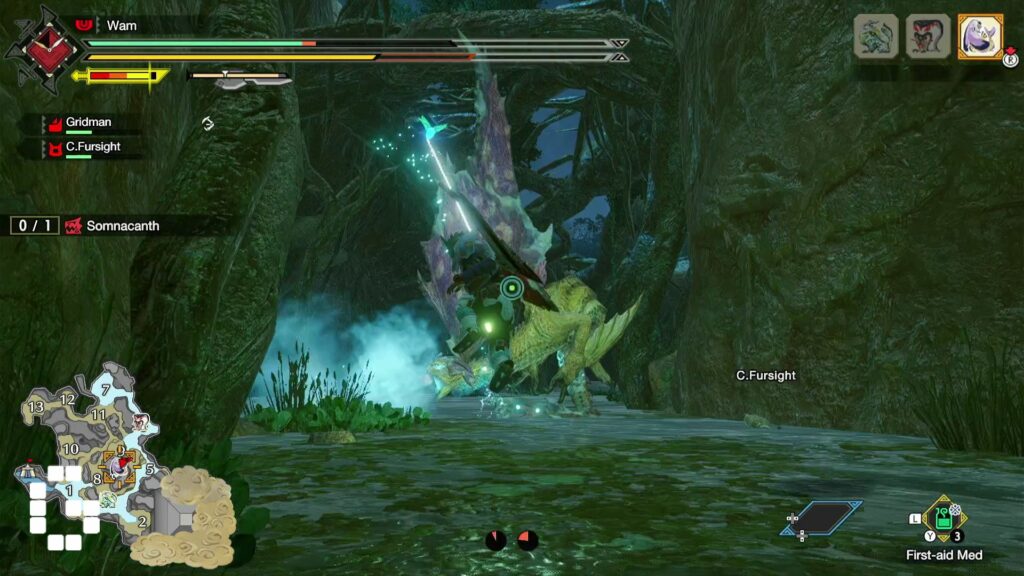
There’s also the case for the Wirefall, the new recovery system. Getting hit lets you spend one charge of your wirebug to immediately get back up, and you can decide what direction to take it so you can safely get back to safety. Those who thirst only for violence can even recover straight towards the monster, getting in another free aerial attack if they’re not knocked out of the sky again.
I absolutely love how the game messes with you with the Wirefall, starting the game letting you feel like it’s almost broken. Monsters aren’t prepared for you to get up so quickly, and it’s easy to curbstomp them even if you get hit as a result. Once you get later in the game though, Wirefall becomes way more tactical, as you’re not totally invulnerable on wake-up. Monsters like Magnamalo can totally pressure you on wake-up, making you down one charge of Wirebug, a lot of health from getting hit twice as well as untold ego damage from falling for it.
Silk, Silk, Milk

One more iterative step they’ve taken is with the SIlkbind attacks, which are basically improved Hunter Arts from Monster Hunter Generations. Each weapon has their own unique Silkbinds, often plugging up gaps traditionally present in the weapon’s playstyle. Hitting with a Silkbind attack always counts as a jumping attack, building up meter to mount monsters.
I really like the selection of Silkbinds you get, with each weapon getting one uncustomizable silkbind, while the other one can be unlocked via the Switch Skill system to be swapped out. Weapons like Heavy Bowgun getting the option to armor up is a great move for the game, as well as weapons like Longsword getting a counter-stance. It really adds more depth to the combat, since you’ll want the reward of getting the mounts to do big damage. Even if you don’t much care for mounting the monster, there’s always the fact that most of these attacks are just plain cool.
They’re also pretty well balanced, with Silkbind attacks also eating your wirebug meter. These make the cooldown way longer than a normal wire dash, and some of the more elaborate Silkbinds will even eat two bars for you, leaving you wide open if you don’t use it carefully.
Mounting Monsters With Your Friends
I remember back in the early days of Monster Hunter Rise’ promotions, where people asked the developers about the mounting system, having been in the game since Monster Hunter 4. The devs explained that Mounting would be gone from the game as we know it, but might be integrated into something new. What they meant about this was the new Wyvern Riding feature, which combines mounting and the Clutch Claw from Monster Hunter World.

After building the mount meter, any player can opt to jump on the monster, riding it using the wirebugs to control the beast. Just like with the clutch claw you can slam monsters into walls this way, doing big damage to the monster you’re riding. You can also expend charges of wirebug to cancel the recovery for these, earning you multiple slams before the monster gets knocked down.
However that’s not all you can do- You can also mount the other monsters roaming the map, since wyvern riding lets you command the monsters to attack. These do big damage and can even inflict elemental blights on your target, making it almost mandatory if you want to finish your hunts quickly. I really like that they’ve done this- I used to think the additional monsters were a bother, even World’s turf wars seemed more like a gimmick than anything valuable.
With Rise though, now you’re getting the ability to weaponize every jobber on the map, helping out the party with a variety of cool attacks before unleashing a Mounted Punisher and knocking your target monster down.
Speaking of Turf Wars though, they’re also back, also integrated into the Wyvern Riding system. Turf War losers will become mountable, meaning you wanna stick around if you want to get a free mount.
The way they’ve balanced this is pretty interesting too, with each monster having a 10-minute cooldown on being mounted. I much prefer this to World’s status meter, because the timer doesn’t change depending on how many people are in a quest. That means if you’re not killing the monster right away you’re getting a maximum of 5 mounts in a quest, and it’s a pretty handy tool for gauging your progress. “This is the third mount, it should be getting weak soon”, and other thoughts.
I feel like Wyvern Riding has really changed the dynamic of a hunt, since now a regular occurrence is watching my fellow hunters seek out the extra monsters to start the hunt with a big damage lead. Public opinion of Rajang has improved drastically, since the monster has some of the best riding attacks in the game and is relatively docile if you haven’t already pissed it off.
Rampage Quests

Another new thing they’ve done with Monster Hunter Rise is the addition of Rampage Quests. These quests are tower defense missions where you have to fight off hordes of huge monsters before they break open your gate. You can run around the stage placing turrets, which can either be manned by you and your fellow hunters or by faceless NPCs.
You can also summon special Defenders, AKA named NPCs with special abilities. I really like that you can do this since it’s the closest thing you’ll have to AI companions from the story. This mode’s really good, which is surprising considering how much I usually dislike gimmick quests. It also helps that the RE Engine is really well optimized on the Nintendo Switch, so even with all the players running around the Switch doesn’t so much as break a sweat.
One complaint about Rampages though is that they are very hard. Outside of the single-player quests, Rampages are totally designed with co op in mind, because once you hit the wave bosses you’ll absolutely need to have a second person helping run damage control and fixing turrets. There’s a mandatory Rampage before you get into High Rank that’s quite hard if you’re trying to slay the boss Monster instead of repelling it, and the speed at which it dismantles turrets is definitely something to look out for.
Hunter’s Best Friend

One drastic shake-up they’ve done with Rise is the addition of the Palamute, an entirely new type of companion. The way it works in Rise is that Palamutes have more offensive roles than the Palico, and can even be ridden around the stage to get across the much larger maps without draining your stamina.
I feel like as offensive tools the Palamutes are about as fine as offensive Palicoes, and their main function is really more about having the mobility of riding your dog.
Meanwhile Palicoes are still as great as they’ve ever been, being able to heal you or even drop bombs against enemy monsters. If you choose to ignore the Palamute completely and go into your hunt with 2 Palicoes, you are required to study the maps a little more, as you’ll need to make use of the map’s shortcuts to make up for the lack of dog-riding to get to your next area.
You can now also bring these animals with you into 4-man hunts, leading to a lot of great team ideas. For the most part I find the Palamute to be the better pick since you get more mobility, but certain Palico skills really help the whole party, such as a mine that functions similar to the Wyrmstake from Iceborne.
The Actual Monster Hunting

Combat is also really fun in Monster Hunter Rise, feeling a lot less clunky than previous iterations. Thanks to the wirebug and Silkbinds, you have plenty of options on how to play your weapon outside of its logline playstyle.
You also have something returning from Monster Hunter Generations, and thats the idea of the customizable moveset. In Generations, you could choose different Hunting Styles, often times radically changing the weapons playstyle such as with Aerial Style giving you a universal jump button and Adept style giving you a parry.

In Rise, what you have now is the Switch Skills. These are three different moves on your weapon that can be swapped out, and 2 of them are unlocked by hitting progress points in the story while the third is unlocked by crafting more weapons. The first Switch Skill is always for your silkbind moves, letting you switch out to a different silkbind.
The other two Switch Skills are way more interesting because they’re both about editing your character’s main moveset. This includes the Greatsword losing its True Charge Slash, and the Switchaxe losing its Amped Discharge attacks in favor of new “super” moves.
It may not seem like much, but these are a huge deal because it creates new playstyles within the weapon itself. Switchaxe, for example, can get 3 attacks that focus way more on individual big damage hits, making them way more viable for waking up monsters. One of these even focuses more on aerial attacks, and adapts way better to the more mobile combat in Rise.
Quality of Life
One consistent change in the past few Monster Hunter games is that we always get an upward trend of Quality of Life features. We went from no feedback on hitting monsters, no item loadouts and environment-specific items to damage numbers, a removal of the Hot Drink mechanic as well as keeping World’s auto-crafting.
On top of that you no longer have to look for monsters, with your Cohoot being able to mark them on the map from you from the start of the quest. The result of these altogether is that you are going straight into the hunt much faster than before, no longer having to run around in circles to mark a monster before it shows up on the map.
While some people might be upset that it’s changing the spirit of Monster Hunter you have to understand- the game’s about more than just one hunt. It’s more about many, many hunts, and usually that means atmospheric things like looking for footprints are just artificially extending how long it takes to get your rare loot. The lack of environment drinks is also super appreciated, since you no longer have to have seprate loadouts for cold or hot climates. While I get it was great for immersion, it ultimately just felt like a tacked on layer of difficulty, since you’d have to disengage and top up your drinks if you weren’t careful.
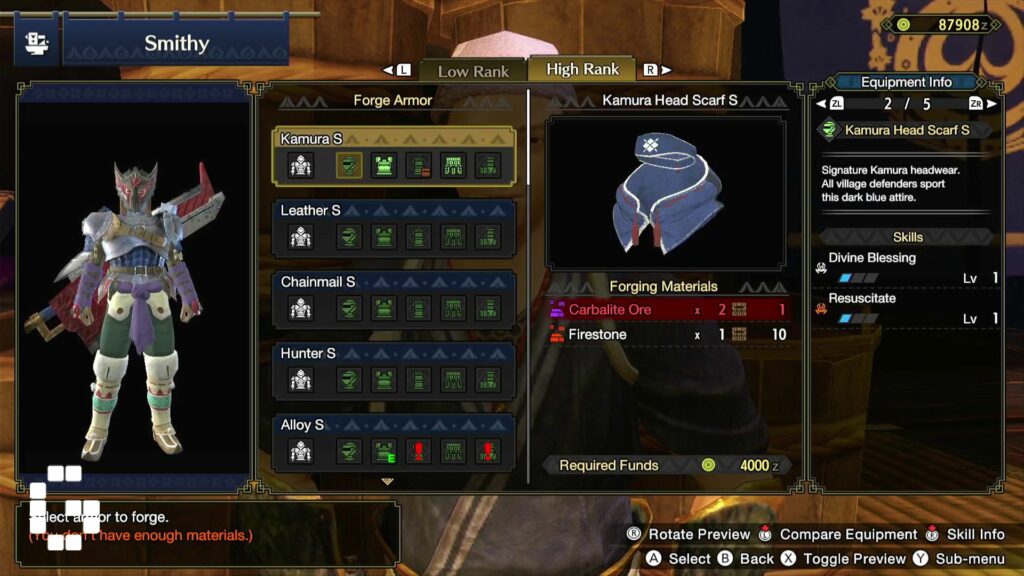
The other quality of life feature they’ve maintained is the armor system from World. Pre-World, armor skills were applied via eldritch math, only activating when you had more than 10 points in a given skill. In Rise, it’s way more straightforward, and armor pieces just give you skills with higher levels offering better bonuses.
They’ve also removed set-specific bonuses, at least for now. While you do get a slight damage increase for wearing pieces from the same set, it’s a far cry from World’s monster-specific set bonuses, so it can feel a little limiting build-wise.
One thing they didn’t keep from World, though, was its Quest system. Monster Hunter Rise has gone back to the game’s traditional setup, with separate quests for single (Village) and multiplayer (Hub). Even then, it’s not a straight-up copy of the system, since they’ve added the new Special Assignments. If you’ve only been grinding the game’s village quests, you’ll be able to do Special Assignments to boost your Hub rank. These are much harder fights than your average Village Quest, but the reward is not having to fight low-tier monsters when you just want to get to High Rank.
Speaking of multiplayer, one more gripe I’ve personally got with the game is its multiplayer lobbies. World increased the size of multiplayer lobbies from 4 to 16, allowing players to rotate the roster of who goes on a quest easily. That’s not there with Monster Hunter Rise, and we’re back to the 4 man lobbies. Since the loading’s much faster that’s not as big an issue, but I do wish you didn’t feel punished for having more than 3 friends at any point in time.
Closing Thoughts

Monster Hunter Rise is definitely a big step forward for the Monster Hunter series, especially when it comes to the field of being palatable to outsiders. It’s still full of Monster Hunter-isms like hiding important information in menus, sure, but it’s a far cry from how bad it used to be with all sorts of tools for new hunters to learn.
The combat feels great, to the point that I’m almost nervous if they say the wirebug was a once-off since I can’t imagine going back to combat without just how good the game feels now that you’re not always grounded. Every old feature that’s been improved has a supporting new feature, and the result is a Monster Hunter game that feels as big a jump from World as World was to its predecessors.
One caveat you should have going in is that like all first-wave Monster Hunter titles, there is no G rank. Even Elder Dragons are largely not in the game yet. The game’s getting them though, with the first DLC drop due out at the end of the month bringing Chameleos.
But if you don’t mind the wait, Monster Hunter Rise is definitely the best Monster Hunter game on the market right now, and save for a few nitpicks an absolute home run of an entry in the series.
| Pros | Cons |
| Combat is the best it’s ever been | Small multiplayer hubs are disappointing |
| The game runs amazingly on the Switch | |
| Ramming monsters into each other is fun |
Final Score:
9/10
Review copy provided by Maxsoft Asia



![[GUIDE] Zenless Zone Zero 2.0 – Yixuan: Master the New Rupture Specialist](https://cdn.gamerbraves.com/2025/06/ZZZ-2.0-Yixuan_Guide_FI-360x180.jpg)

![[GUIDE] Zenless Zone Zero 2.0 – Pan Yinhu: The Cuddly Tank That Packs a Punch](https://cdn.gamerbraves.com/2025/06/ZZZ-2.0-Pan-Yinhu_Guide_FI-360x180.jpg)
![[GUIDE] Zenless Zone Zero 2.0 – Pull Recommendations](https://cdn.gamerbraves.com/2025/06/ZZZ-2.0-Pull-Recommendations_Guide_FI-360x180.jpg)
![[GUIDE] Polychrome Farming in Zenless Zone Zero Version 2.0](https://cdn.gamerbraves.com/2025/06/ZZZ-2.0-Polychrome-Farming_Guide_FI-1-360x180.jpg)
![[GUIDE] What’s New in Zenless Zone Zero Version 2.0](https://cdn.gamerbraves.com/2025/06/ZZZ-2.0-Whats-New_Guide_FI-3-360x180.jpg)

![[EXCLUSIVE] Inside Japan’s Indie Game Revolution – An Interview with BitSummit Organizer Masahiko Murakami](https://cdn.gamerbraves.com/2025/05/BitSummit-Orgainzer_Interview_FI-360x180.jpg)
![[EXCLUSIVE] The Art of Adaptation: Developer Interview Details the OVERLORD Mobile RPG Lord of Nazarick](https://cdn.gamerbraves.com/2025/05/Lord-of-Nazarick_Interview_FI-360x180.jpg)
![[EXCLUSIVE] Taking Gundam in Bold New Directions – Interview with GQuuuuuuX Director Kazuya Tsurumaki](https://cdn.gamerbraves.com/2025/04/Kazuya-Tsurumaki_Interview_FI-1-360x180.jpg)


![[SEA Exclusive] From Shadows to Shipwrecks – Jennifer English Talks About Bringing Emotional Depth to Clair Obscur: Expedition 33](https://cdn.gamerbraves.com/2025/04/Clair-Obscur-Jennifer-English_Interview_FI-360x180.jpg)

![[EXCLUSIVE] Do the Game Interview – An Intimate Look at the Challenges of Game Development](https://cdn.gamerbraves.com/2025/04/Do-the-Game_Interview_FI-1-360x180.jpg)



